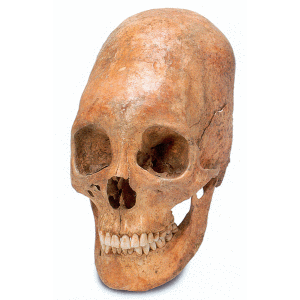'Hunnic' modified skulls: physical appearance, identity and the transformative nature of migrations
Hvem, hvad, hvor og hvornår
Gæsteforelæsning ved Susanne Hakenbeck, McDonald Institute for Archaeological Research/Newnham College, Cambridge.
Forelæsningen, som er på engelsk, finder sted den 6. marts 2009 kl. 16:15 på KUA i lokale 23.4.39. Den er arrangeret som et samarbejde mellem Centralasiatisk Selskab og projekt Roots of Europe.
Alle er velkomne.
Kort beskrivelse af emnet
 Historically, the advance of the Huns into Roman territory in the fourth and fifth centuries AD has been thought of as the domino piece that set in motion the migrations of other barbarian tribes which ultimately brought about the collapse of the Roman Empire.
Historically, the advance of the Huns into Roman territory in the fourth and fifth centuries AD has been thought of as the domino piece that set in motion the migrations of other barbarian tribes which ultimately brought about the collapse of the Roman Empire.
However, the archaeological evidence associated with them provides a more complex picture of migrations and the effects they had on the migrating and the receiving populations:
-
First, the migration of nomadic peoples into the Roman provinces in the Carpathian basin was a gradual process that profoundly changed the material expressions of identity and led to the development of a ‘hybrid’ identity.
-
Second, the distribution of women with modified skulls, a practice that has been associated with the Huns, west of the Carpathian basin indicates directed movements of individuals, possibly in the context of an exogamous social structure.
Individuals with modified skulls and the manner in which they were buried thus provide a case study for examining the relationship between physical appearance, identity and the transformative nature of migrations.![]()
